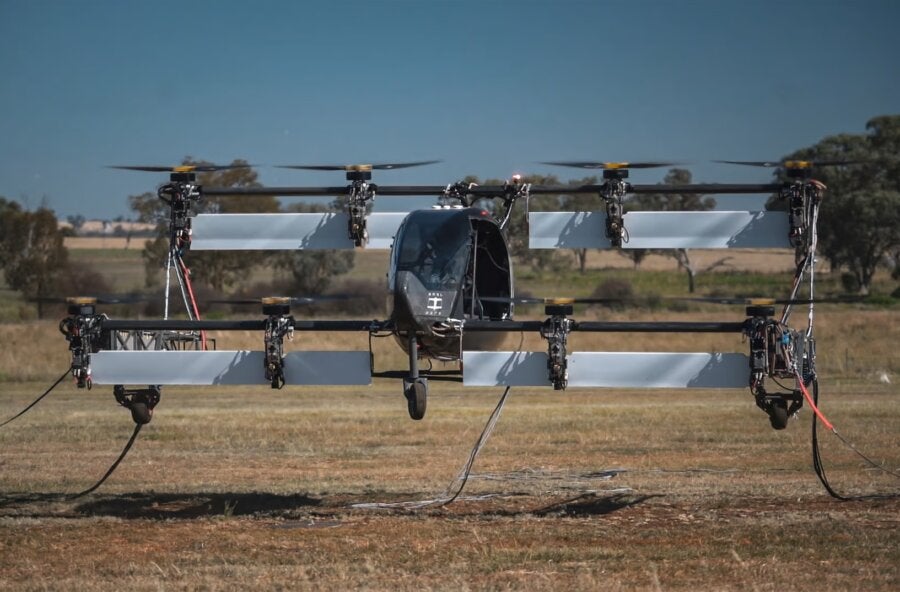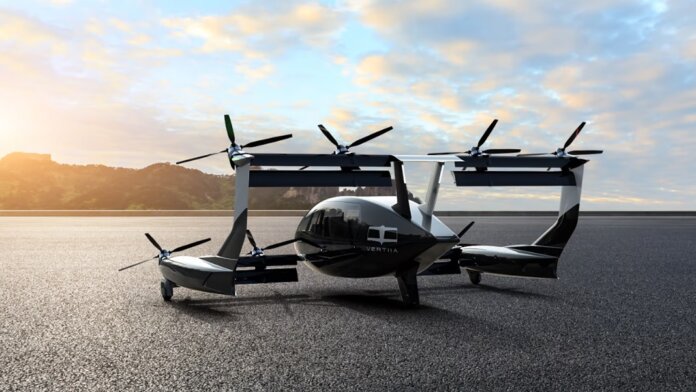From the Axe to the Ryse Recon, Aska A5, or Jetson One, there’s no shortage of electric vertical takeoff and landing (eVTOL) aircraft in the works, ramping up to fill the skies with easy-breezy transit in the who-knows-how-distant future. But despite an across the board wow-factor, what all these vehicles are missing is range. The Aska A5 leads the pack with a 250-mile flight range, but it’s not all-electric; it has lithium-ion battery packs and a gas engine.
Enter a new player: AMSL Aero’s Vertiia. The eVTOL is designed to go up to 250 kilometers (155 miles) on electric batteries and up to 1,000 km (621 miles) with a hydrogen fuel cell power train.
AMSL Aero is an Australian company that was founded in 2017 by a husband and wife team: Andrew Moore, who previously worked as an aeronautical engineer at Yamaha, and Siobhan Lyndon, a former director of people operations at Google. They raised $23 million in Series B funding last year, and just completed the Vertiia’s first successful test flight.
The flight was remote-controlled and tethered, with a prototype aircraft that’s slightly smaller than the planned production version. The Vertiia will have space for five people—four passengers and a pilot—or up to 500 kilograms (1,100 pounds) of cargo. It will have eight sets of motors and propellers on a box wing design. This design reduces wingtip drag and ups aerodynamic efficiency, meaning the Vertiia’s relatively small size—its wingspan is 23 feet—shouldn’t stop it from operating smoothly in an urban environment with compact spaces.

The box wing design will provide an additional advantage once the aircraft starts running on hydrogen: AMSL plans to store the hydrogen fuel in tanks that connect the ends of the wings. Hydrogen’s energy density is better than that of batteries, but worse than jet fuel; planes will need about four times as much liquid hydrogen as they do jet fuel to fly the same distance.
That’s a lot more weight to carry, and the challenges don’t end there. Liquid hydrogen also needs to be stored under pressure and at very cold temperatures, meaning the tanks that hold it will be more complex than conventional jet fuel tanks.
But Moore believes that, in a sense, all of this can work to the Vertiia’s advantage. “One of the great advantages of the box wing is that if you do it right, what you put in the wingtips actually helps you aerodynamically,” he said. “So if you’re putting underslung tanks under your wings, that’ll give you a significant drag penalty—whereas for us, it can actually help reduce drag.”
Moore and Lyndon are purpose-building the Vertiia for the aeromedical, emergency services, and passenger markets, describing it as “a safe aircraft that could ease the burden of traffic congestion, provide greater choice over where people can work and live, improve medical access and patient outcomes for Australia’s rural and remote communities and most importantly, assist in de-carbonizing the transport industry.”
They’re not the only ones hoping to use hydrogen as an aircraft fuel. Rolls-Royce tested its hydrogen-powered jet engine late last year, and Airbus is working on a “megawatt-class” hydrogen fuel cell jet engine. Competitor Lilium isn’t aiming to use hydrogen fuel, but is targeting a similarly long range as the Vertiia with its unique fixed-wing eVTOL design.
AMSL is aiming for the Vertiia to enter service in 2026. Given the regulatory approvals, test flights, and production steps left to complete, that seems like an ambitious timeline, but the team feel that once they see success in their home country, bringing their product to the rest of the world will be an easy next step.
“Vertiia…was developed for the harsh long-distance conditions in Australia,” said Lyndon. “If it can work in Australia, it can work anywhere.”
Image Credit: AMSL Aero

No comments:
Post a Comment